Looking at the back of the system, you will likely notice a key feature. This system is cabled nicely, and there is certainly effort beyond “just getting it to work” cabling that we normally use. Falcon Northwest built this system within a day or two for us, so we were impressed with how neat the cabling was even with that fast of a turnaround time.
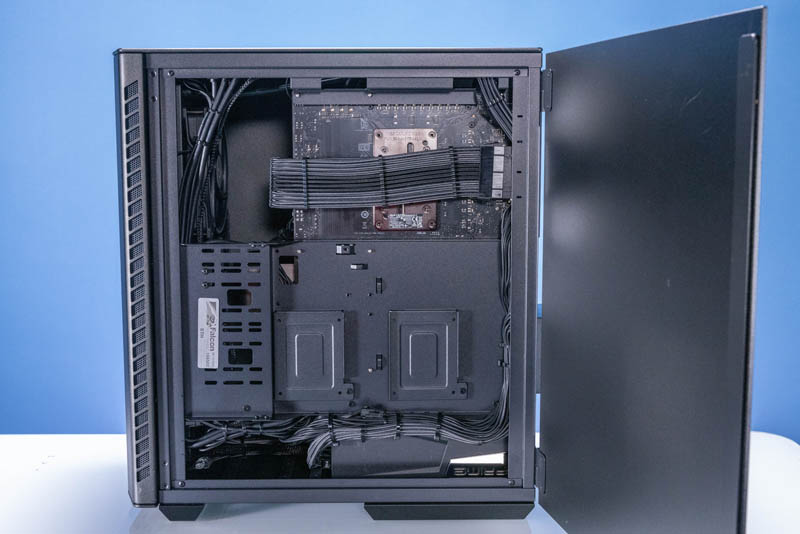
Here is a view of the ATX power cable that one can see looks very neat.
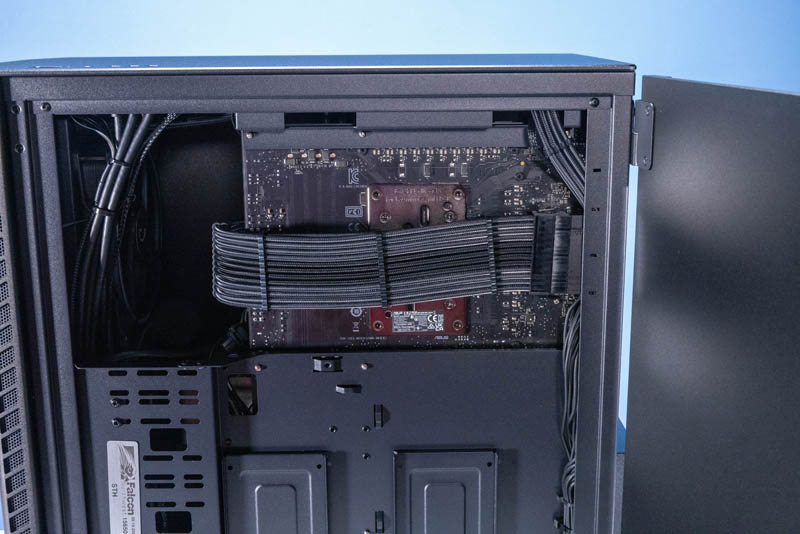
The back of the system also has spots for two 2.5″ drives. The system has so much M.2 storage that we would likely not use these, but they are there if you want some additional storage.
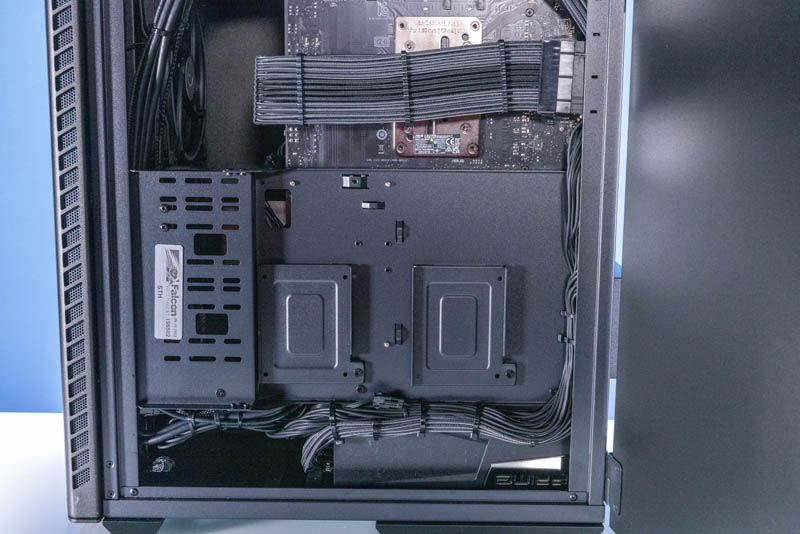
Another fun feature is that there was a little made-for STH placard with a build date and a serial number inside the system.
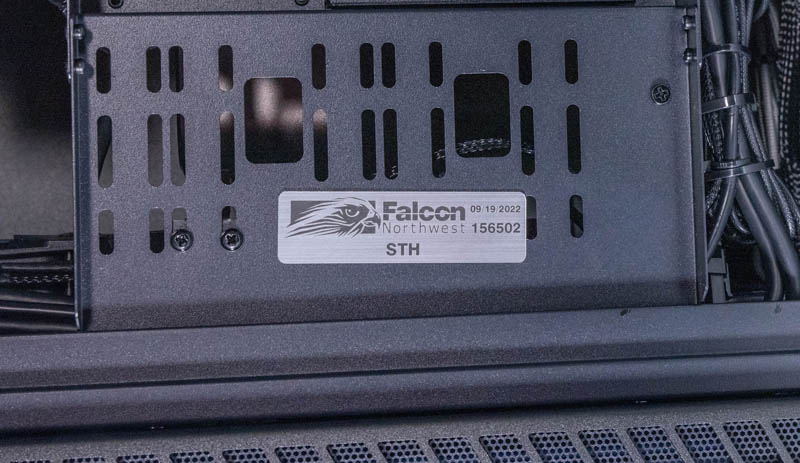
One can see the neatly bundled cables being fed into the new Seasonic Prime power supply.
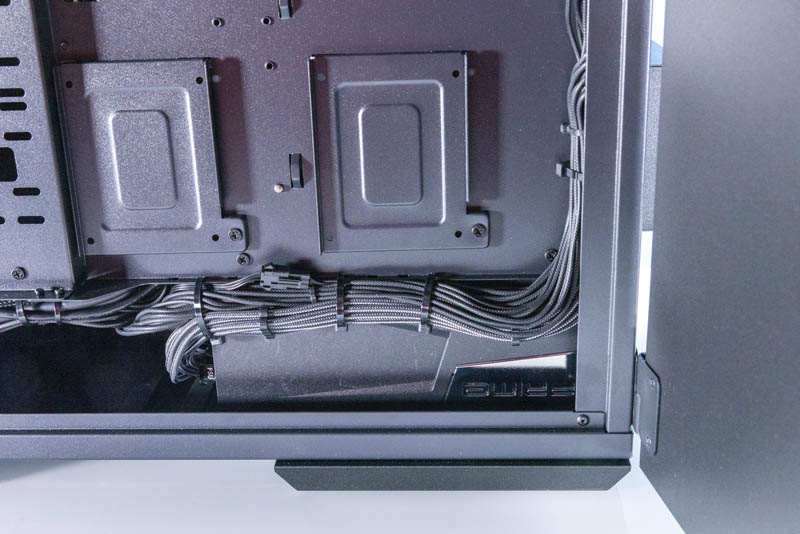
We also had a box with the additional cables and accessories like the WiFi antenna and also this ASUS M.2 PCIe Gen5 NVMe SSD to PCIe slot card.
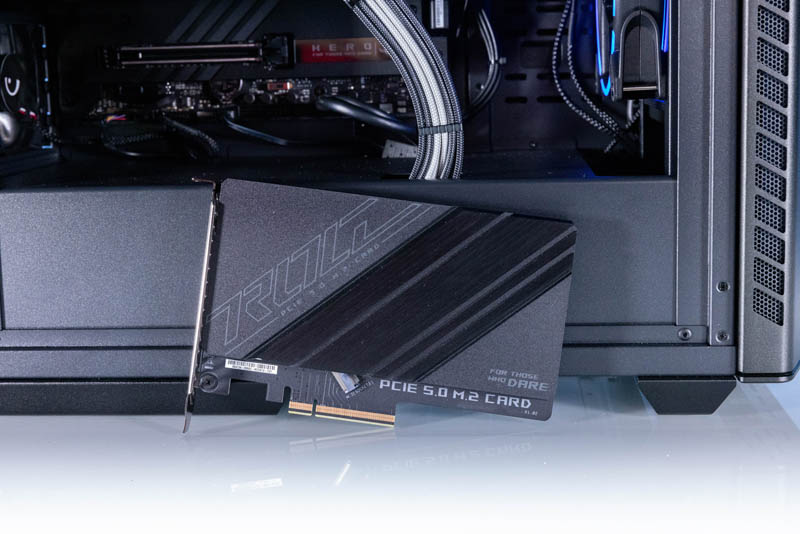
Next, let us get to the system’s performance.
Falcon Northwest Talon AMD Ryzen 9 7950X Workstation Performance
Perhaps the most exciting feature of the system is the AMD Ryzen 9 7950X. Just as a quick note here, we were certainly getting solid turbo boosts here. This is an example of the stock 5.7GHz+ clocks we would regularly see.
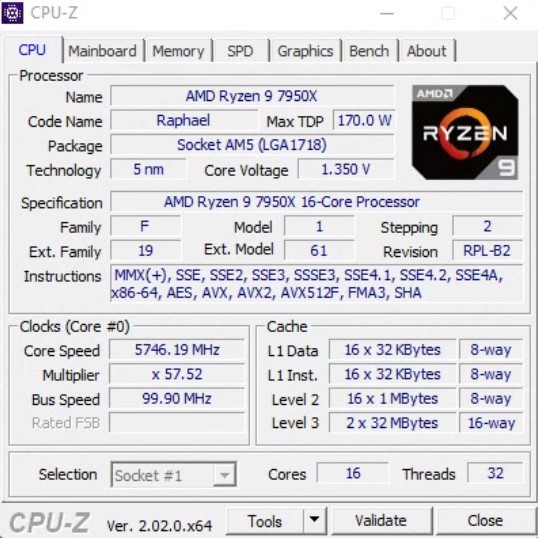
A big part of the performance of the AMD Ryzen 9 7950X is allowing the CPU to run at higher temperatures, and then the system needs to cool the chip to allow for those higher boost clock speeds (and associated power.)
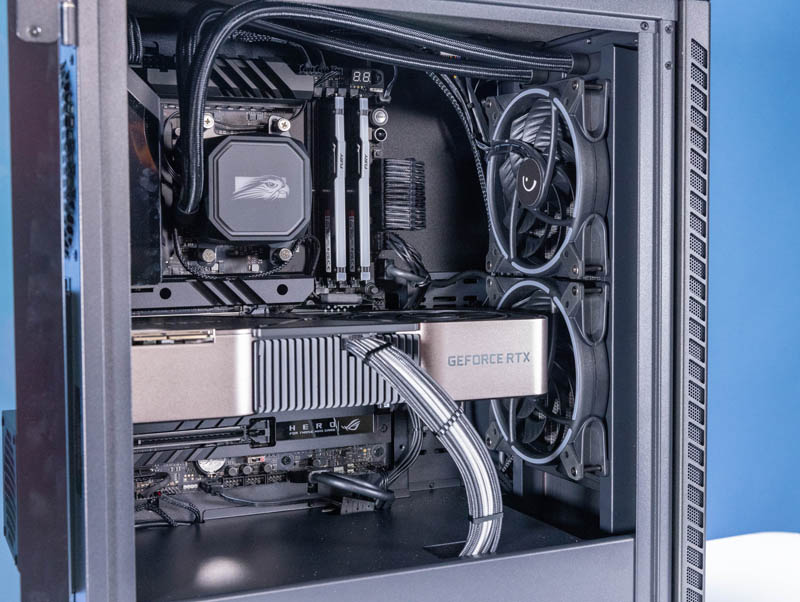
In terms of performance, we ran a number of workloads but wanted to focus on showing a sample of non-gaming workloads. We used the default Windows 11 installation for things like our Premiere Pro runs, but we swapped over to Ubuntu for most of the below, just to show something different from many of the gaming sites.
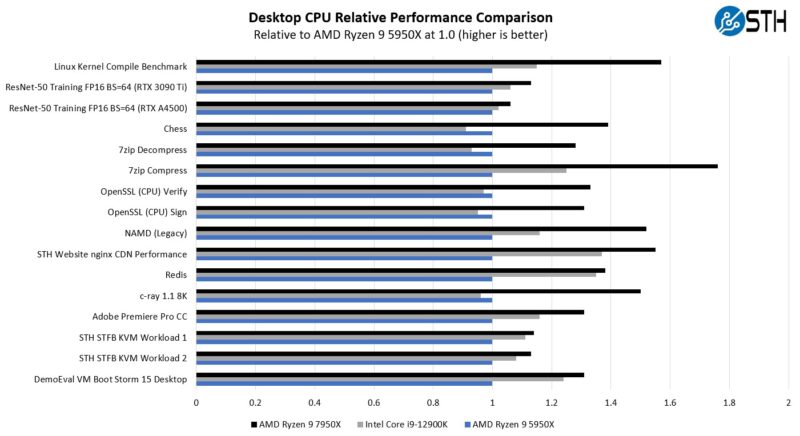
Here are a few notes on the above summary:
- We did not see the AMD Ryzen 9 7950X go below the Ryzen 9 5950X performance. This is a straight upgrade without regressions.
- We even saw slightly better performance in mostly GPU-bound workloads like the AI training workloads.
- We ran a number of virtualized workloads, and the new chips performed exceptionally well.
This is one of those instances where we saw really solid performance across the board. With that said, we have the 13th generation Intel Core series in the lab, but we cannot publish those numbers. We specifically did this to be able to have a comparison between these four chips.
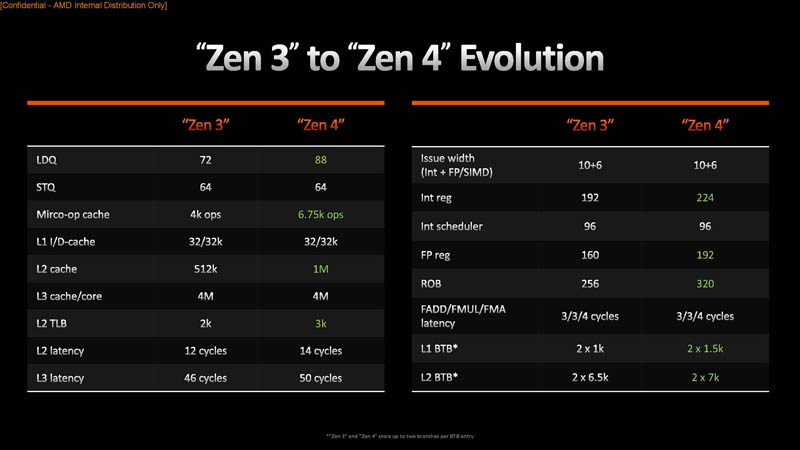
What is important here, looking forward not just to this system but also to Genoa, is that AMD was able to increase single-thread performance via both clock speed as well as a larger L2 cache and IPC uplift. Zen 4 is less of a re-design than Zen 2 to Zen 3, but AMD was still able to get gains.
As a bonus, in the video, we have Dr. Ian Cutress, formerly of Anandtech, discussing his performance thoughts, including AVX-512 performance of this chip.
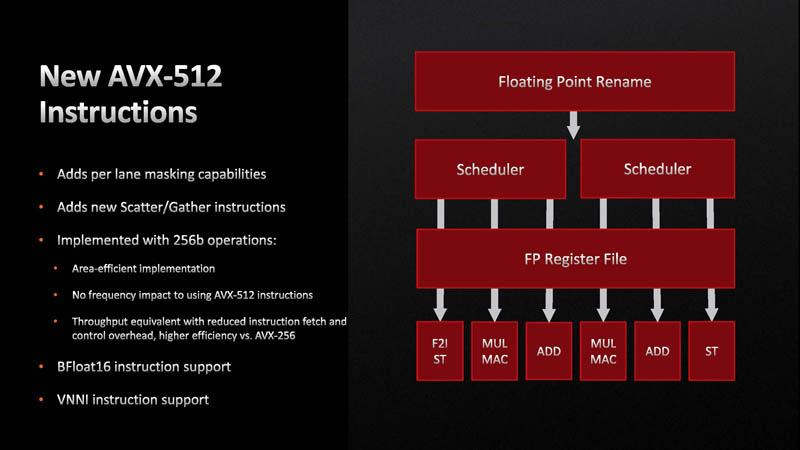
Perhaps the biggest changes may be on the AI instruction side (beyond AVX-512.) With both bfloat16 and VNNI, the AMD Ryzen 9 7950X has the AI instructions added to Cooper Lake (bfloat16) and Ice Lake (VNNI) in a single CPU. If you wanted to develop for this level of acceleration, then AMD has something solid with Zen 4.
Next, let us get to the power consumption, along with our final thoughts.




“…largely soleless workstations…”
Unless those workstations had no bottoms of their feet, I think you meant soulless.
Relative performance graphs are the scourge of the hardware world. Show true numbers. ~1,4x performance in Chess? Doing what? It’s Premiere rendering, or scrubbing?
It would appear that they chose to install the RAM in the DIMM_A2/B2 slots. Was that on purpose?
I bought a (different) ASUS AM5 board recently, and the DIMM_A1 slot didn’t work at all, so just curious if this is a bigger problem.
@Sam, yes those are the correct slots for two modules. It’s in every Asus mobo user guide, since DDR3 at least.
Yeah that’s the right one. That’s why it’s good for people to do pre-builds.
Did I just miss it, or was the ‘as built’ cost not posted in the review? I read through it once completely, then skipped around all the pages looking for ‘$’, ‘price’, ‘cost’, etc, but found no specific dollar amount listed; I might be losing it though, haven’t had my coffee yet